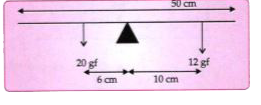Umbra, metre rod, penumbra, eclipse
To solve the question, we need to analyze the four terms provided: Umbra, metre rod, penumbra, and eclipse. We will identify the common characteristics of each term and determine which one does not belong to the same category.
Step 1: Understand the meaning of each term.
- Umbra: This is the darkest part of a shadow, where the light source is completely blocked.
- Penumbra: This is the lighter part of a shadow, where the light source is partially blocked.
- Eclipse: This is an astronomical event that occurs when one celestial body moves into the shadow of another celestial body.
Step 2: Identify the common theme.
- The terms Umbra, Penumbra, and Eclipse are all related to the concept of shadows and light. They describe different aspects of how light interacts with objects and how shadows are formed.
Step 3: Analyze the odd one out.
- The term metre rod refers to a physical object used for measuring length. It does not relate to shadows or light in the same way that the other three terms do.
Step 4: Conclusion.
- Based on the analysis, the term that is different from the group is the metre rod because it is a measuring instrument, while the other three terms are related to shadows and light phenomena.
Final Answer:
The odd one out is the metre rod.
---
- Umbra: This is the darkest part of a shadow, where the light source is completely blocked.
- Penumbra: This is the lighter part of a shadow, where the light source is partially blocked.
- Eclipse: This is an astronomical event that occurs when one celestial body moves into the shadow of another celestial body.
- The terms Umbra, Penumbra, and Eclipse are all related to the concept of shadows and light. They describe different aspects of how light interacts with objects and how shadows are formed.
- The term metre rod refers to a physical object used for measuring length. It does not relate to shadows or light in the same way that the other three terms do.
- Based on the analysis, the term that is different from the group is the metre rod because it is a measuring instrument, while the other three terms are related to shadows and light phenomena.
The odd one out is the metre rod.
Topper's Solved these Questions
- MODEL TEST PAPERS BOOK - ICSECHAPTER - MODEL TEST PAPERS EXERCISE - TEST PAPER I (SECTION II) Give reasons for the following
4 Videos
- MODEL TEST PAPERS BOOK - ICSECHAPTER - MODEL TEST PAPERS EXERCISE - TEST PAPER I (SECTION II) Explain the following terms
3 Videos
- MODEL TEST PAPERS BOOK - ICSECHAPTER - MODEL TEST PAPERS EXERCISE - TEST PAPER I (SECTION I) Choose the correct option to fill in the blank.
5 Videos
- MATTERBOOK - ICSECHAPTER - MATTEREXERCISE - Picture Based Questions
2 Videos
- PHYSICAL QUANTITIES AND MEASUREMENT BOOK - ICSECHAPTER - PHYSICAL QUANTITIES AND MEASUREMENT EXERCISE - Picture-Based Questions
1 Videos
Similar Questions
Knowledge Check
At room temperature, the staggered and eclipsed conformers of ethane continuously change into each other. This is because
Athey are very unstableBC-C bond is flexibleCthe energy barrier between the two is not large enough to prevent rotationDC atom in ethane has a tetrahedral nature.Assertion: Staggered conformation of ethane is most stable while eclipsed conformation is least stable. ltbr> Reason: Staggered form has the least torsional strain and the eclipsed form has the maximum torsional strain.
AIf both assertion and reson are true and reason is the correct explanation of assertionBIf both assertion and reason are true but reason is not the correct explanation of assertion.CIf assertion is true but reason is false.DIf both assertion and reason are false.
A half metre rod is pivoted at the centre with two weights of 20 gf and 12 gf suspended at a perpendicular distance of 6 cm and 10 cm from the pivot respectively as shown below:

Is the rod in equilibrium ?
View SolutionA uniform metre rod is bent into L shape with the bent arms at 90∘ to each other. The distance of the centre of mass from the bent point is
View SolutionA half metre rod is pivoted at the centre with two weights of 20 gf and 12 gf suspended at a perpendicular distance of 6 cm and 10 cm from the pivot respectively as shown below.

Which of the two forces acting on the rigid rod causes clockwise moment?
View SolutionA half metre rod is pivoted at the centre with two weights of 20 gf and 12 gf suspended at a perpendicular distance of 6 cm and 10 cm from the pivot respectively as shown below:

The direction of 20 kgf force is reversed. What is the magnitude of the resultant moment of the forces on the rod ?
View SolutionA metre rod of silver at 0∘C is heated to 100∘C. It's length is increased by 0.19 cm. coefficient of volume expansion of the silver rod is
View SolutionWhat is the energy difference between the staggered and eclipsed conformations of ethane?
View Solution
